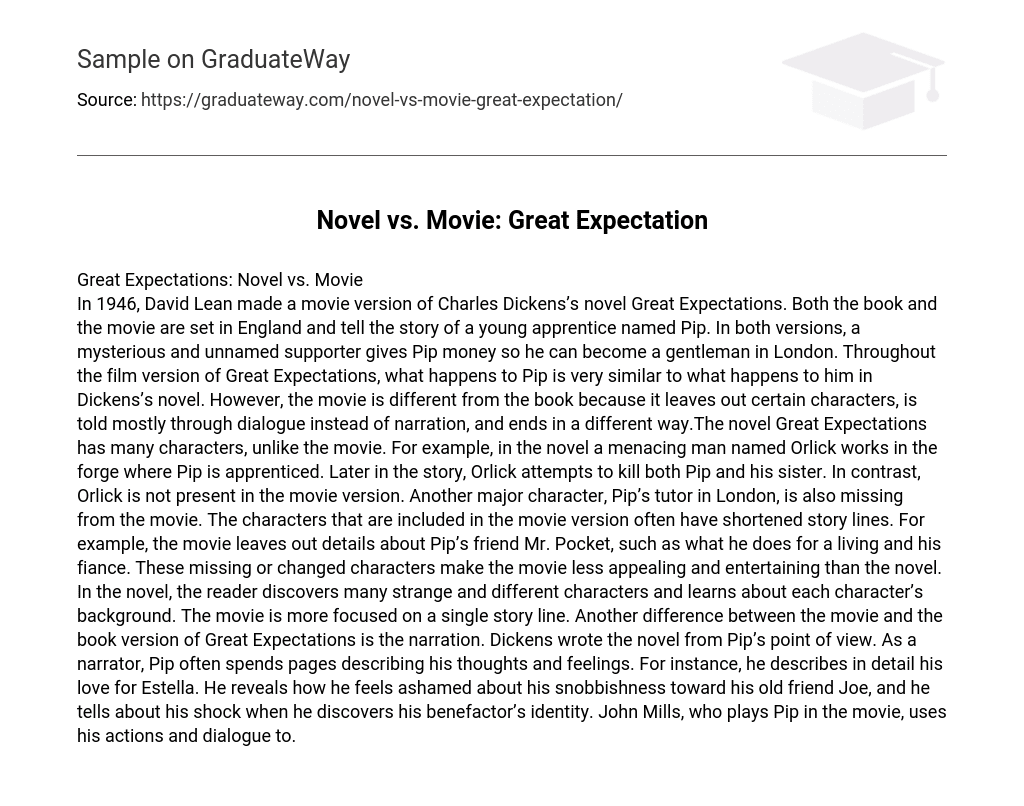Great Expectations: Novel vs. Movie
In 1946, filmmaker David Lean adapted Charles Dickens’s Great Expectations into a film.
Both the book and the movie take place in England and follow the story of a young apprentice known as Pip. In both versions, an unidentified supporter provides Pip with money so that he can become a gentleman in London. Throughout the film adaptation of Great Expectations, Pip’s experiences closely mirror those depicted in Dickens’s novel. However, the movie diverges from the book by omitting certain characters, relying primarily on dialogue rather than narration, and presenting a different ending. Unlike the movie, the novel Great Expectations features a plethora of characters. For instance, Orlick, a menacing individual, is employed at the forge where Pip serves as an apprentice.
Later in the story, Orlick tries to murder both Pip and his sister, which is not depicted in the movie adaptation. Additionally, the movie omits another significant character, Pip’s tutor in London. Furthermore, the movie usually condenses the storylines of the characters that are included. For instance, it neglects to provide information about Mr. Pocket, Pip’s friend, including his occupation and engagement.
The movie version of Great Expectations is less appealing and entertaining than the novel due to missing or changed characters. In the novel, readers encounter an array of strange and diverse characters and gain insight into their backgrounds. Conversely, the movie emphasizes a single storyline. Additionally, the narration differs between the book and the film adaptation, as Dickens wrote the novel from the perspective of Pip.
Pip, as the narrator, frequently devotes pages to depicting his internal thoughts and emotions. One such example is his intricate portrayal of his affection for Estella. He confesses his shame for harboring snobbish attitudes towards his childhood companion Joe, and he expresses his astonishment upon uncovering the true identity of his patron. In the film adaptation, actor John Mills effectively conveys Pip’s experiences through his physical gestures and spoken lines.





